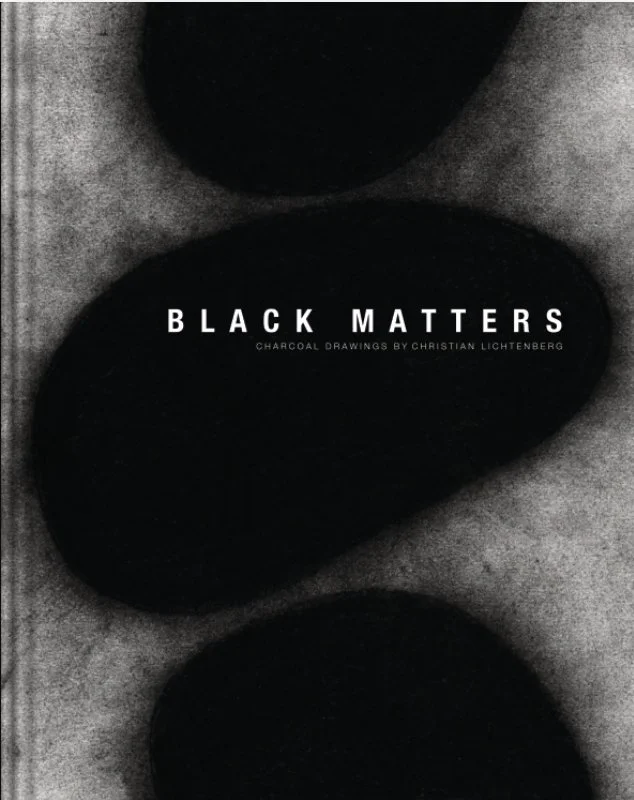
T H E S I L E N T S O U N D O F S T O N E S _ Selection of Charcoal drawings (Originals A4 and A3)
S T O N E S
In Zen Buddhism, stones symbolize simplicity, stillness, and the unchanging essence of reality. They are often incorporated into Zen gardens, where their placement and form evoke a sense of timelessness and the natural flow of the universe. Stones represent stability amidst the transient nature of life, serving as reminders of the impermanent world and the need to cultivate mindfulness. In meditation, they embody the concept of “no-mind” (mushin), where the mind becomes clear, like a still stone. Through their quiet presence, stones invite contemplation on the interconnectedness of all things and the path to inner peace.
In Shintoism, stones hold a profound spiritual significance, symbolizing permanence, stability, and the presence of kami (spirits or deities). They are often seen as sacred objects embodying the divine essence of nature. Stones are placed in shrines and sacred sites, marking the dwelling places of kami. These natural objects are believed to possess their own spiritual power, a concept known as “iwakura,” where stones act as vessels for the gods. Their unchanging nature reflects the Shinto belief in the enduring connection between the spiritual and physical worlds. Through reverence for stones, Shintoism emphasizes harmony with nature and the divine.
And-, beyond symbolism, stones can fly.
C H A R C O A L
Black charcoal, a medium as ancient as it is expressive, has recently been a discovery in my toolkit. From the earliest cave drawings to my pictures, charcoal’s unique properties have made it a preferred choice for me, seeking to explore the depths of tone, texture, and emotion.
Charcoal, as an art medium, has roots that trace back to prehistoric times. The earliest evidence of its use can be found in cave paintings, where early humans used burnt sticks to create images on the walls of caves, depicting their daily lives and spiritual beliefs. These primitive artists were drawn to charcoal for its availability and the bold, expressive marks it could produce.
In contemporary art, black charcoal continues to be a popular medium in mixed media and experimental works.




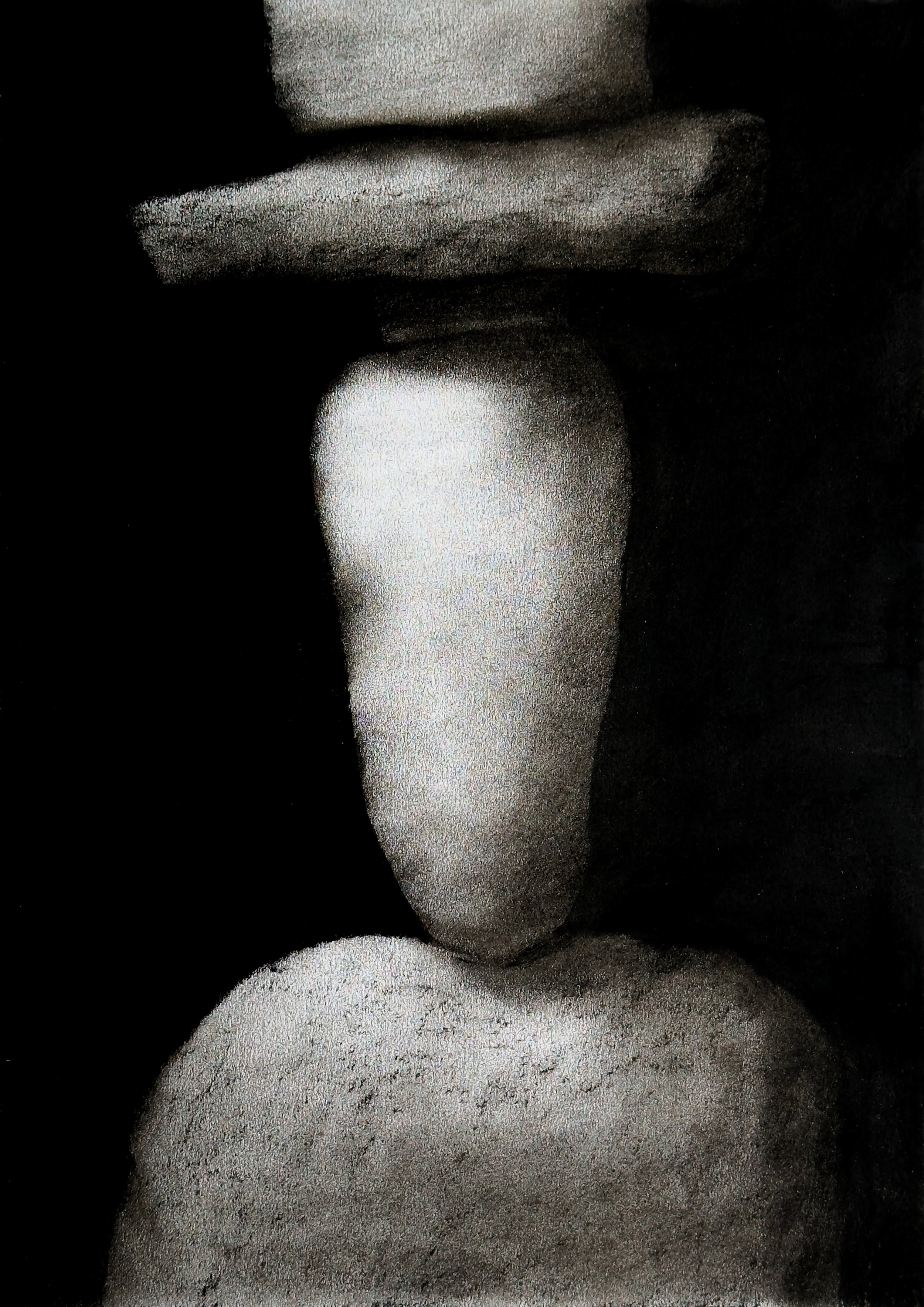





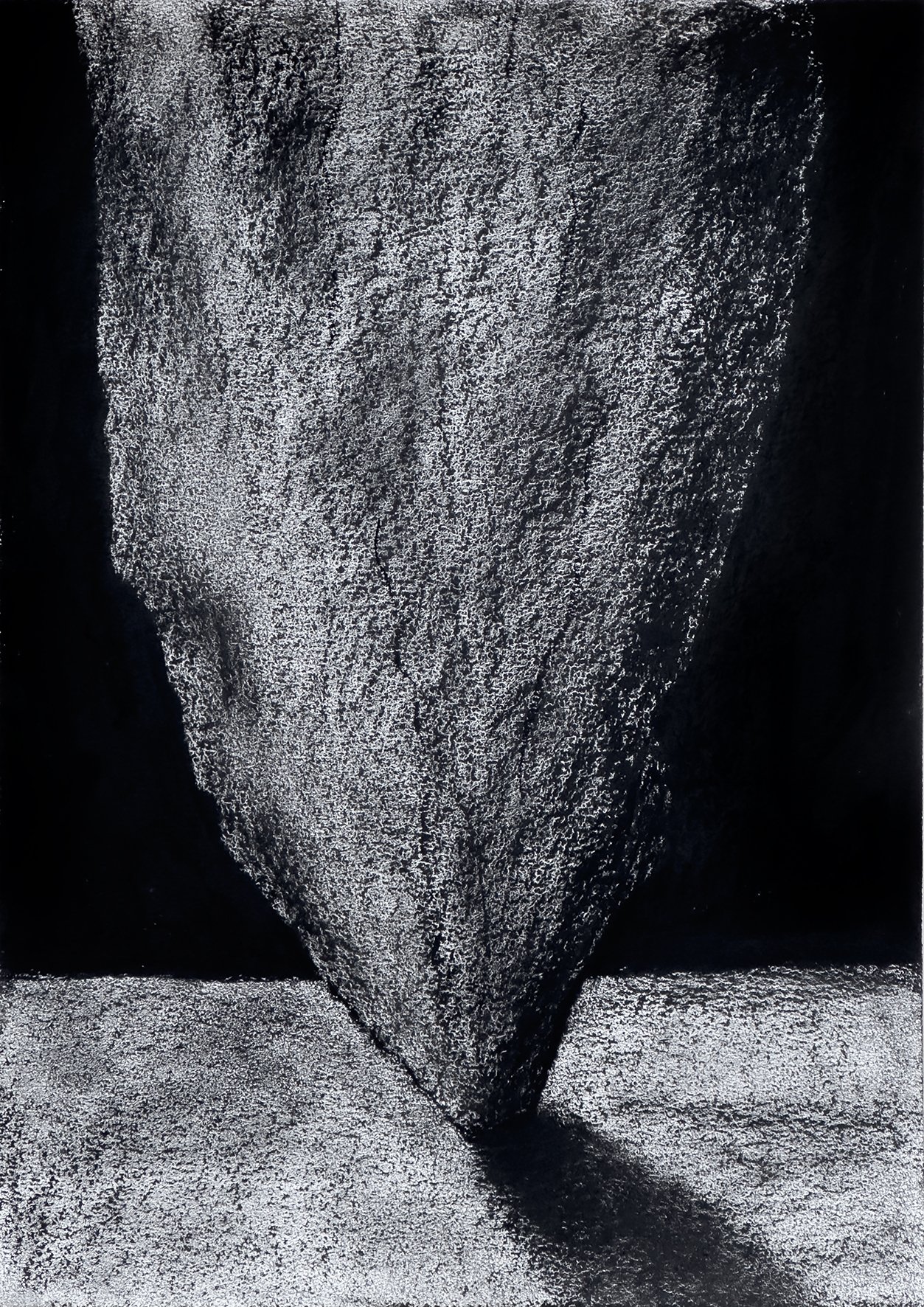






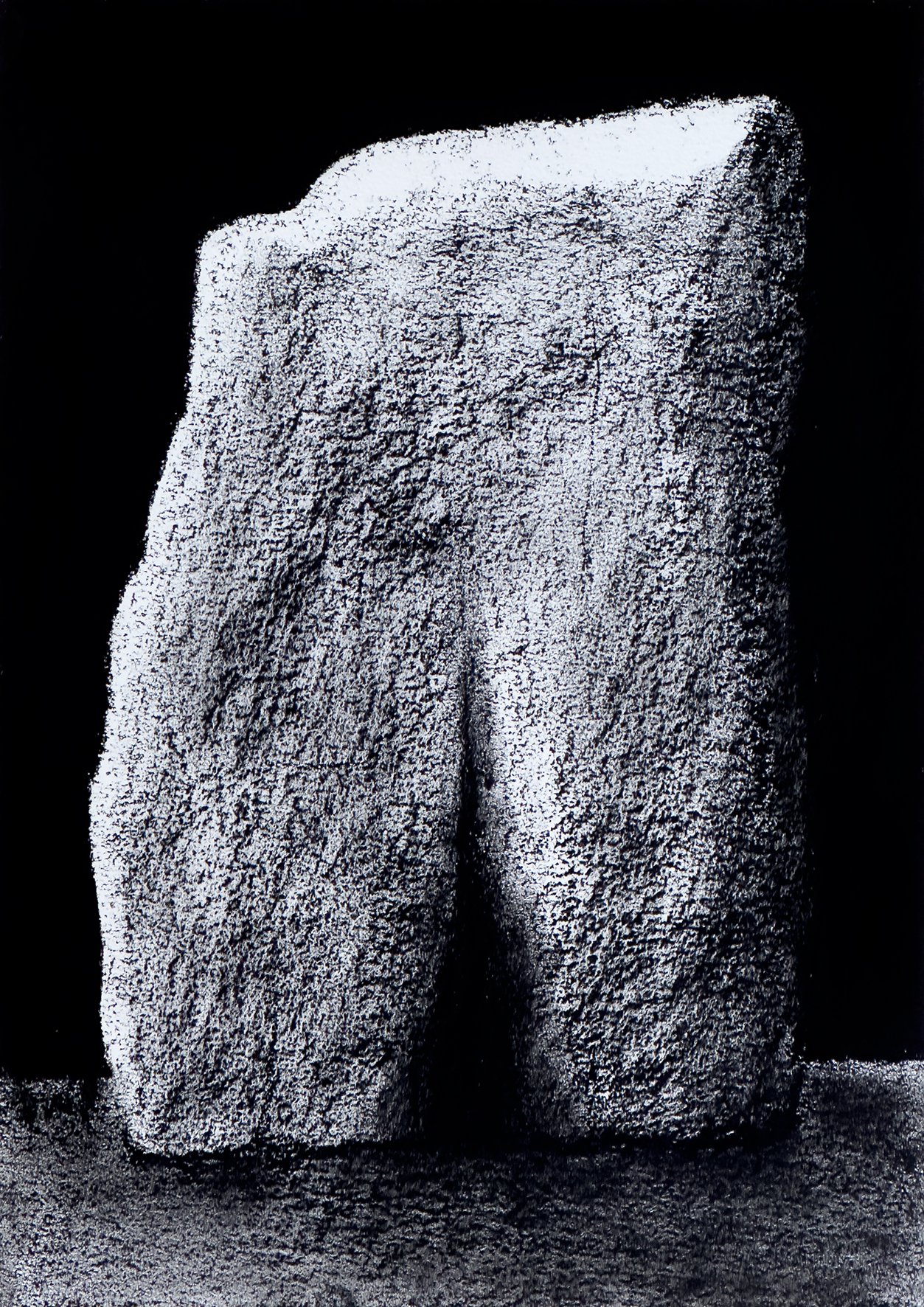






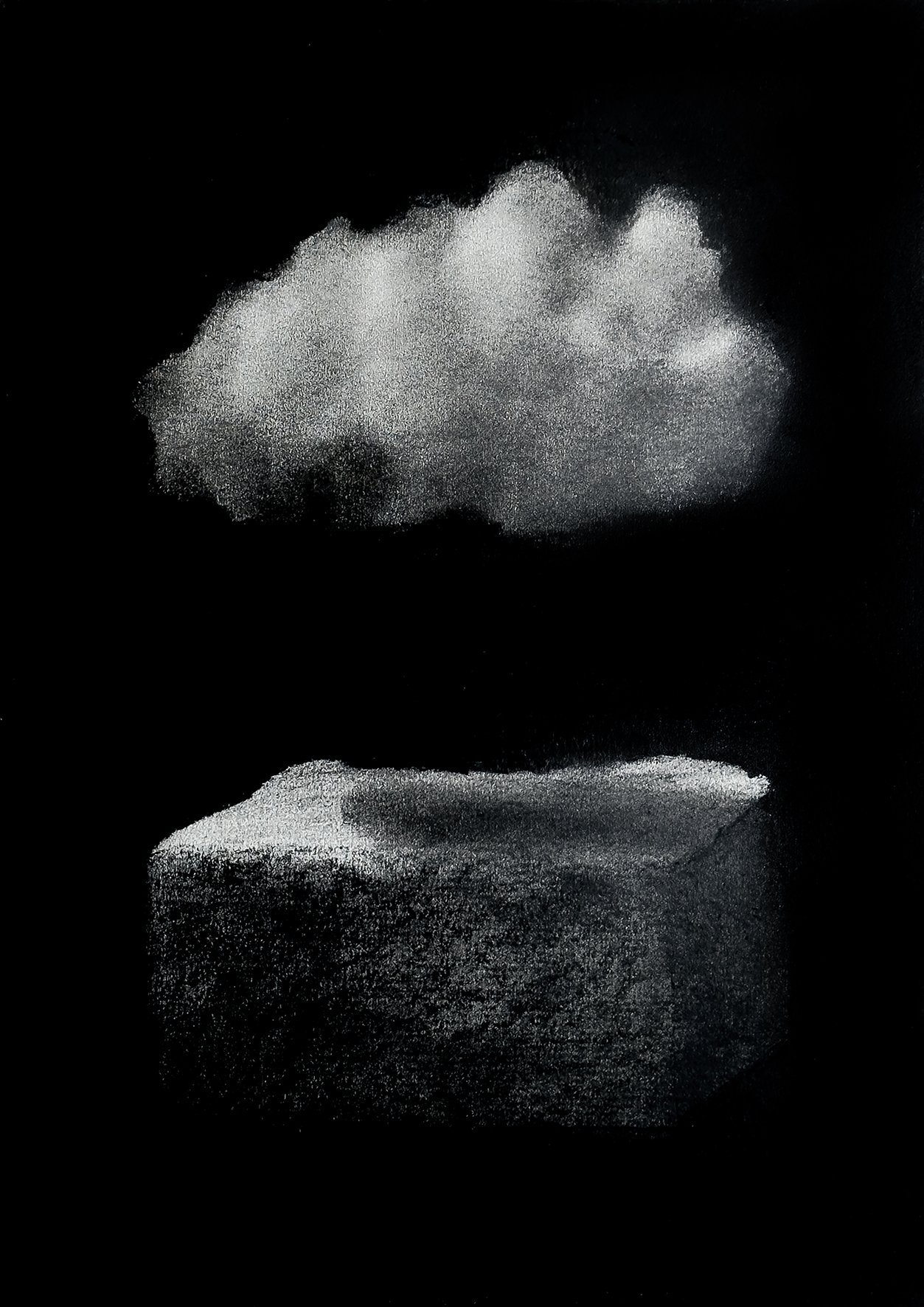









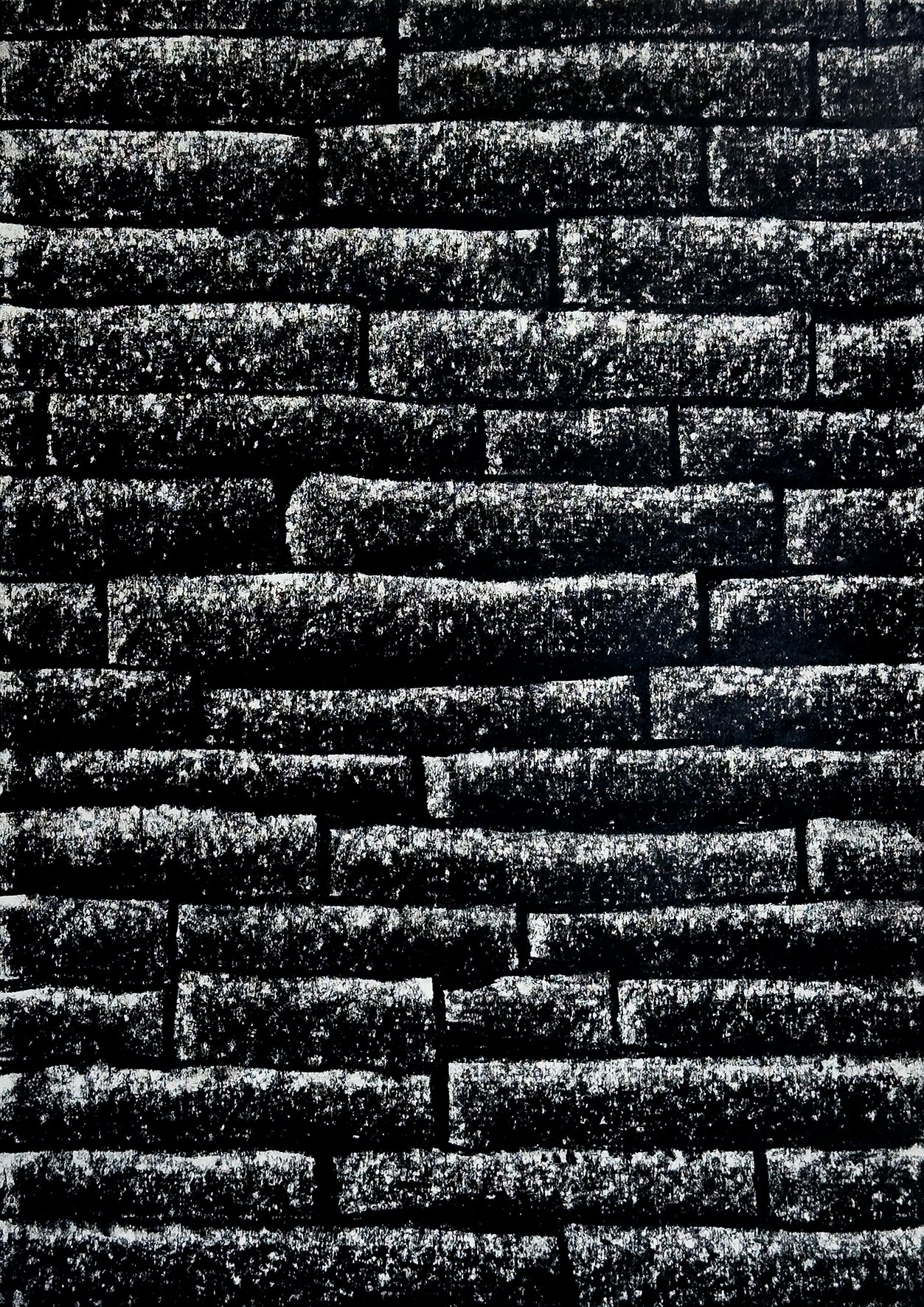
If you would like to buy the book, please click on the book. It directs you to the print shop. Thank you.
B L A C K M A T E R S _ Selection of Charcoal drawings (Originals A4 )
B L A C K
The color black holds profound cultural, psychological, and symbolic significance across many societies. Its complexity stems from its dual nature as both a symbol of power and mystery, as well as a representation of mourning and fear. Black’s versatility in meaning makes it a pivotal color in fashion, art, literature, and rituals.
Psychologically, black is often associated with authority, elegance, and sophistication. In fashion, black attire conveys a sense of timelessness and professionalism, signaling seriousness or luxury. The color’s ability to absorb light without reflecting it gives it an air of mystery and depth, often used to signify the unknown or the hidden.
In cultural contexts, black frequently symbolizes death and mourning. Many Western cultures use black clothing to express grief during funerals, while in other societies, black is linked to the afterlife or the supernatural. In literature, black often evokes fear, danger, or the concept of evil, as seen in works where darkness or shadow represents peril.
However, black also plays a significant role in positive symbolism. It can signify resilience and strength, especially in contexts where individuals or communities reclaim the color as a form of empowerment. For instance, in the Black Power movement, black was worn to symbolize pride and solidarity.
Thus, the color black is powerful and multifaceted, embodying both negative and positive aspects depending on context. Its significance transcends mere aesthetics, delving deep into the human experience of emotions, culture, and symbolism.
“We have art so that we shall not die of reality.”
Friedrich Nitzsche

























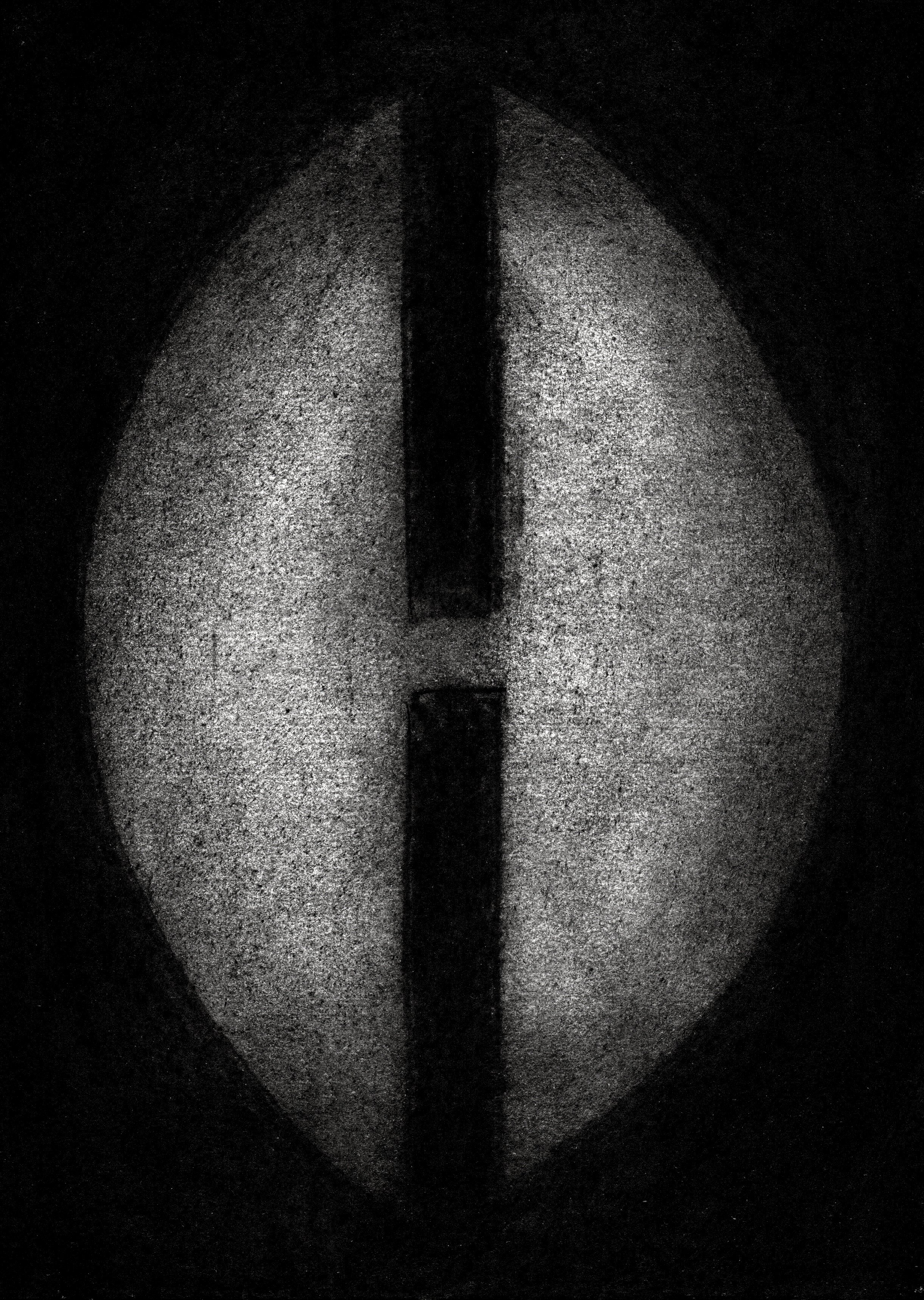









If you would like to buy the book, please click on the book. It directs you to the print shop. Thank you.
“ B A S T A R D S “ _ Selection of Charcoal drawings (Originals A4 )
A Side Product of Conceptual Art: “Bastards”
Conceptual art, emerging in the mid-20th century, focuses on ideas over the traditional aesthetic or material qualities of art. It emphasizes the concept rather than the medium, often leaving behind objects, thoughts, or traces that are unintended yet essential byproducts. These byproducts or “side products” reflect the ephemeral, abstract nature of conceptual work, and may hold unexpected significance. An art piece titled “Bastards” could engage with these unintended outcomes, calling into question the legitimacy or purity of what is created incidentally alongside the main idea.
The word “bastard” traditionally refers to something illegitimate or born outside formal boundaries, suggesting that the title “Bastards” highlights the unplanned and often disregarded aspects of the creative process. These “bastards” may be sketches, discarded objects, or fragments of thought that were never intended to stand alone but now possess a life of their own. Conceptual art, with its fluid boundaries between thought and creation, often generates such material— unintended consequences that enrich the art world by their very deviation from the intended piece.
In this context, “Bastards” could serve as a critique of the conventional categorization of art, blurring the line between what is considered “complete” orm“valuable” and what is dismissed as peripheral. Conceptual art often confronts established norms by questioning the importance of a finished product, and the side products become vital in understanding the scope of the work.
Ultimately, “Bastards” might invite the audience to reflect on the value of these side products, asking whether the essence of art lies in its intended meaning, or whether it also encompasses the messy, chaotic elements that surround and shape the creative process. This piece would force viewers to consider that what is marginalized—those “bastards” of creation—may hold deeper truths about the nature of art and life itself.
A selection of titles from ChatGPT 40 for this work:
- “In the margins of every masterpiece lie the bastards of creation— unwanted, yet irreplaceable.”
- “The beauty of art’s bastards is that they are unpolished mirrors of the truth, untouched by the artist’s perfectionism.”
- “Every discarded sketch, every accidental mark, carries the raw essence of creativity—the bastards of the artist’s intention.”
- “Art’s bastards are the fragments of inspiration left behind when the mind seeks too much order.”
- “What we call art’s bastards are often the echoes of ideas too wild to be tamed.”
- “The illegitimate offspring of the artist’s mind are sometimes more authentic than the masterpiece.”
- “In the chaos of creation, art’s bastards remind us that beauty is often born from what was never meant to be.”
- “Bastards of art may never hang on walls, but they are the silent witnesses to the artist’s soul at work.”
- “Perfection begets silence, but the bastards of art scream with life and possibility.”
- “What we discard as imperfect are often the true bastards of art, imperfect only in the eye of the creator.”



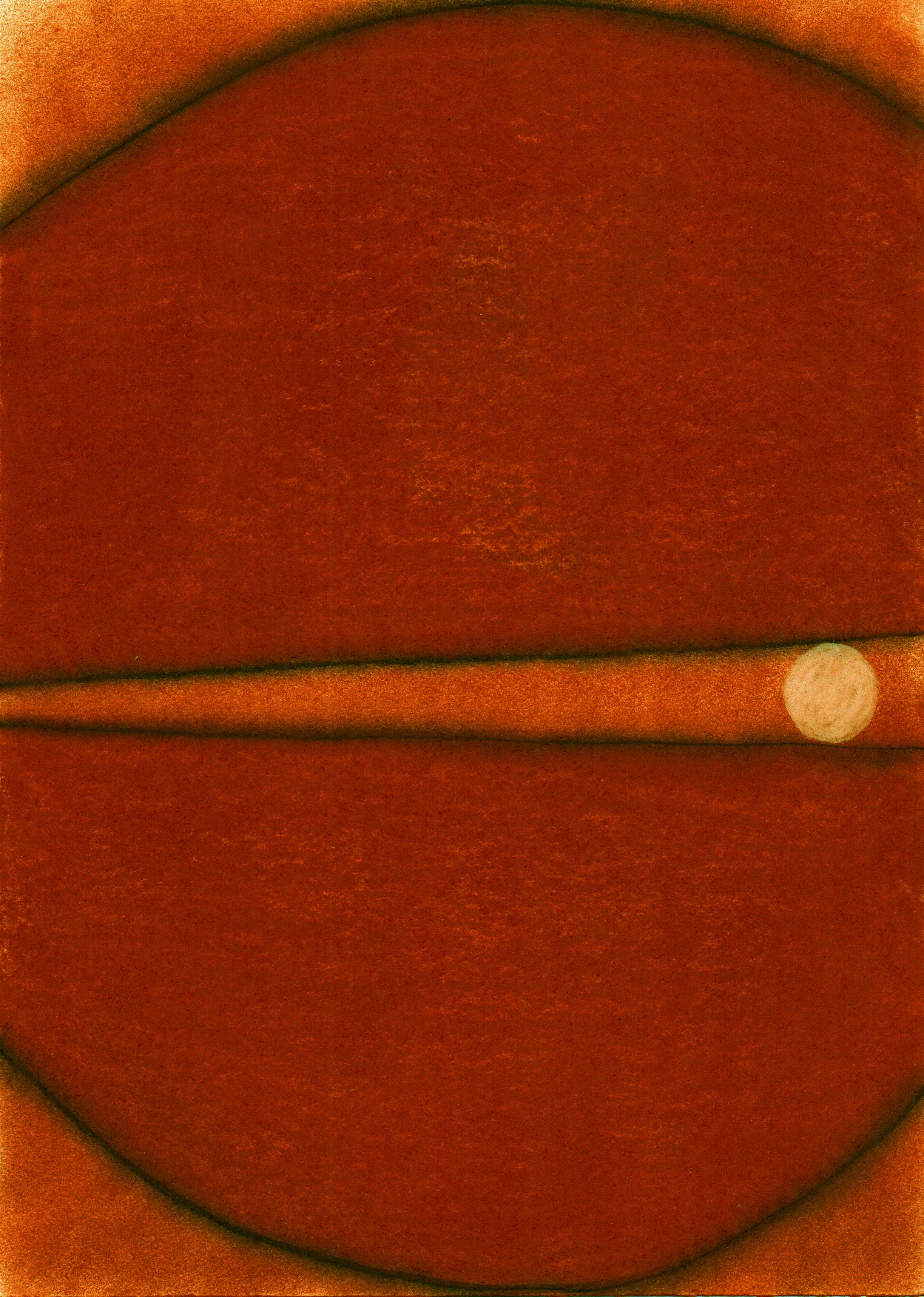



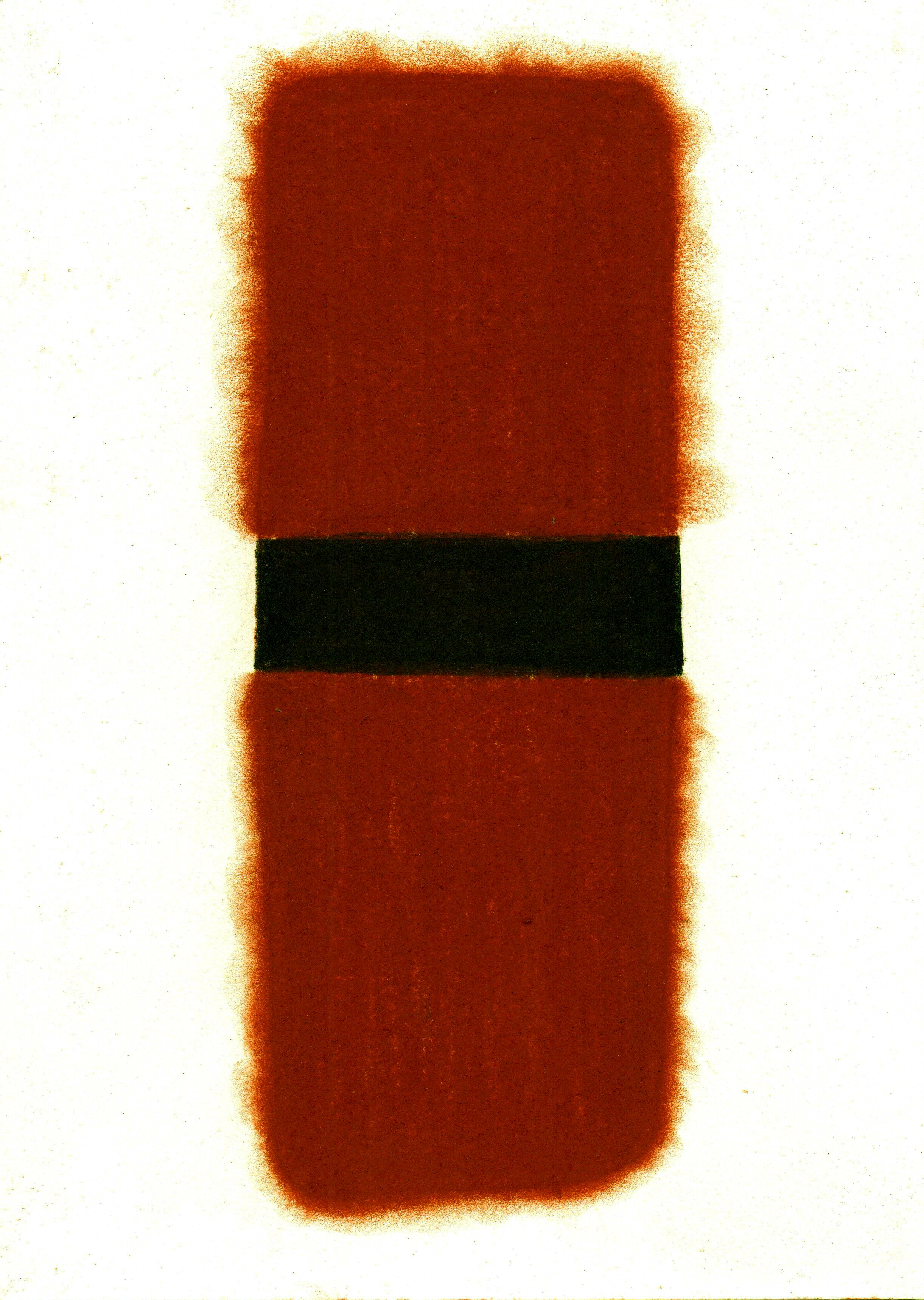



























If you would like to buy the book, please click on the book. It directs you to the print shop. Thank you.
Notes from abroad _ (Originals A3)























C O S M I X / Selection
Cosmix is an extended series of paintings, photos and mixed media. about spaces, forces and energies. The following is a small selection.
“It helps me to think about the universe with
its constant change of all its diversity as a huge
play and not so much about what a serious
mystery it is.”
Cluster Oil Paint on antique Calligraphy from Laos / Paper on Canvas / 197 x 101,5 cm
Saphron Sun Oil Paint with Saphron on antique Calligraphy from Japan / Paper on Canvas / 164 x 123 cm

Ring Of Fire Acrylic Paint on antique Calligraphy from Laos / Paper on Canvas / 100 x 120 cm

Black Presence Acrylic Paint on antique Calligraphy from Japan / Paper on Canvas / 104 x 120 cm

Black Planets Oil Paint / Sand / on antique Calligraphy from Japan / Paper on Canvas / 123 x 183 cm

A Cluster Of Black Holes Acrylic Paint on antique Calligraphy from Japan / Paper on Canvas / 156 x 120 cm

Cosmic Fingerprint Oil Paint on antique Calligraphy from Japan / Paper on Canvas / 80 x 120 cm

Centerd 2 Oil Paint on antique Calligraphy from Japan / Paper on Canvas / 80 x 120 cm

Home Of The Paradox Oil Paint on antique Calligraphy from Japan / Paper on Canvas / 80 x 120 cm

Centerd 1 Oil Paint on antique Calligraphy from Japan / Paper on Canvas / 80 x 120 cm
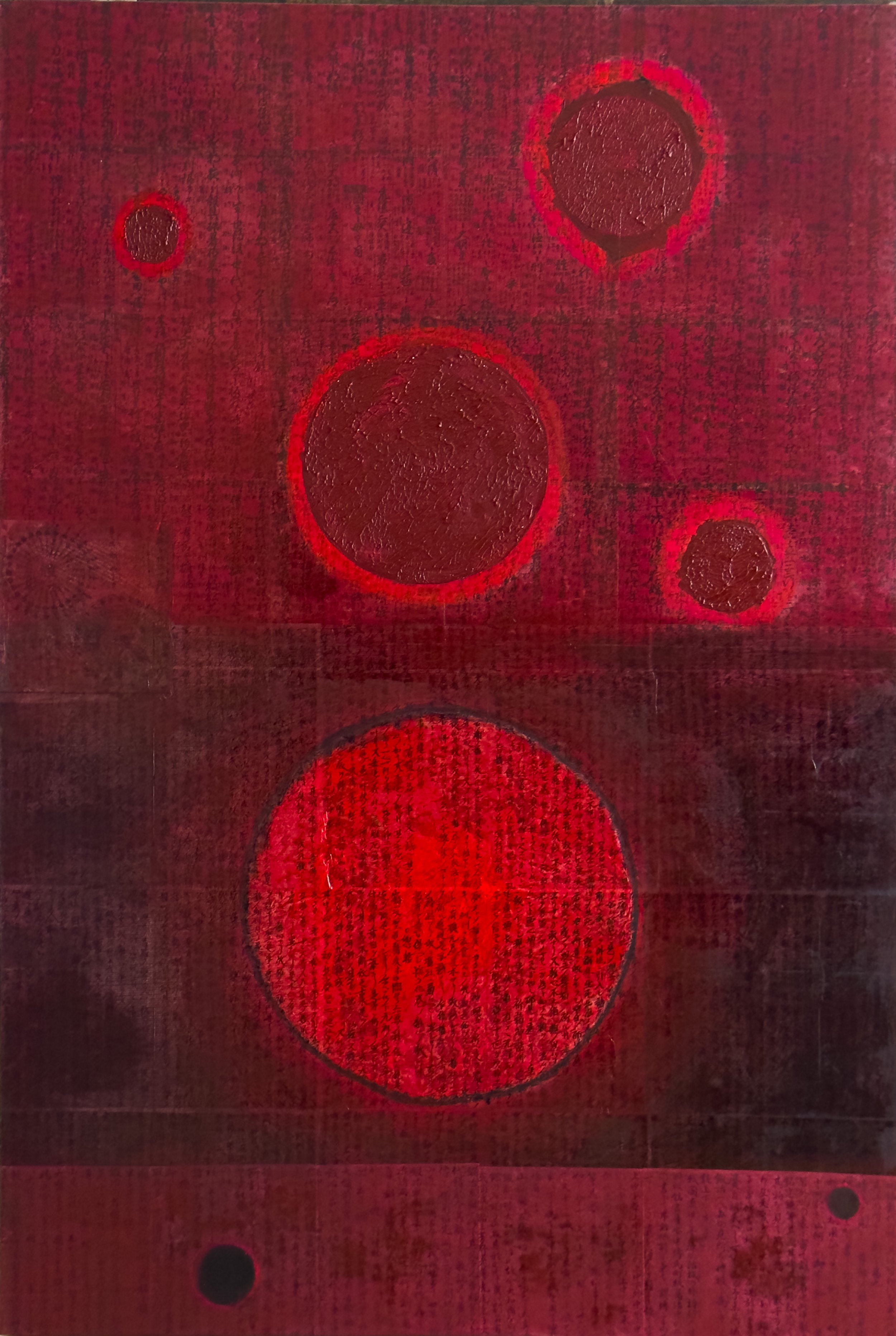
Red Spheres Oil Paint on antique Calligraphy from Japan / Paper on Canvas / 80 x 120 cm

Code 1 (2 Parts) Oil Paint on antique Calligraphy from Japan / Paper on Canvas 160 x 100 cm
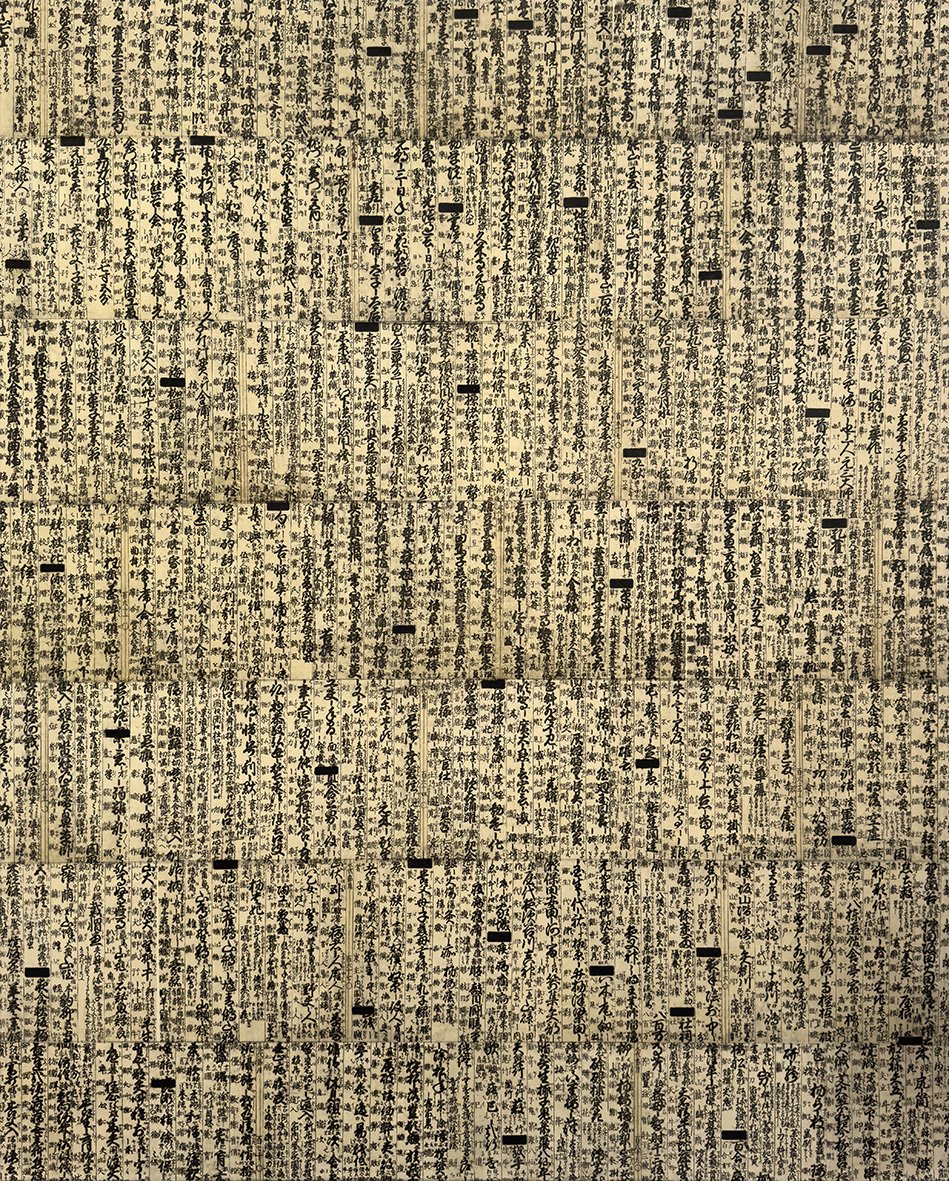
Code 2 Oil Paint on antique Calligraphy from Japan / Paper on Canvas 80 x 100 cm

Code 3 (2 Parts) Oil Paint on antique Calligraphy from Japan / Paper on Canvas 100 x 160 cm

Equilibrium 2 Acrylic on wood / 92 x 122 cm

Equilibrium 1 Acrylic on wood / 92 x 122 cm

Sirius Acrylic Paint on antique Paper on Canvas / 120 x 190 cm

My Constallation: The Blue Elephant Inkjet Print on antique japanese Paper on Canvas / 190 x 130 cm

Chinese Astrology. Year Of The Snake Oil Paintt on antique japanese Paper on Canvas / 120 x 180 cm

Ouroboros (3 Parts) Oil and Acrylic Paint on antique Paper from France on Canvas / 272 x 120 cm

Epiphany Oil Paint on antique Calligraphy from Japan / Paper on Canvas / 130 x 190 cm

Gravaty 1 Oil Paint on old Paper / 30 x 60 cm

Gravaty 2 Oil Paint on old Paper / 30 x 60 cm

Black Hole Oil Paint oo old Paper / 35 x 44 cm

Meteorite Shower Oil Paint on old Paper / 29,7 x 84 cm

Dark Planet Oil Paint on old Paper / 29,7 x 84 cm

Ballet Oil Paint on old Paper / 84 x 29,7 cm

Meteorite 1 Oil Paint on antique Paper / 35 x 44 cm

Meteorite 3 Oil Paint on antique Paper / 35 x 44 cm

Meteorite 4 Oil Paint on antique Paper / 35 x 44 cm

Meteorite2 Oil Paint on antique Paper / 35 x 44 cm

And There Were Stars All Over Me Photograph 60 x 90 cm / bw / Edition 1/3

Dreaming Photograph 60 x 90 cm / bw / Edition 1/3

Blinded By The Light Photograph 60 x 90 cm / bw / Edition 1/3

Supernova Photograph 60 x 90 cm / bw / Edition 1/3

Tsukimi (Moon Gazing) Photograph 60 x 90 cm / bw / Edition 1/3
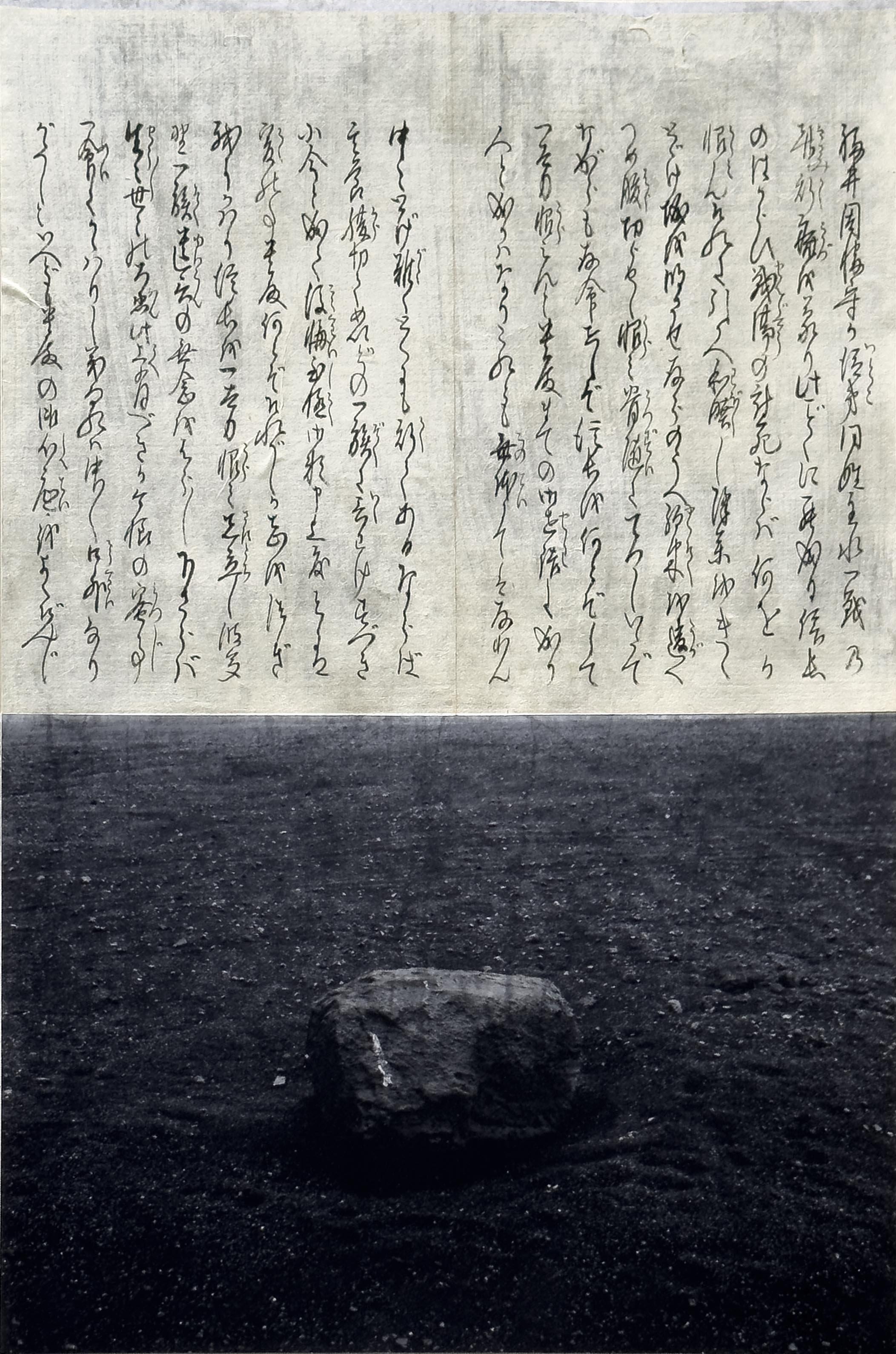
Secret Sign Photograph bw / antique japanese Calligraphy / 29 x 44 cm / Edition 1

Moonbathing Photograph 60 x 45 cm / b/w / Edition 1/3
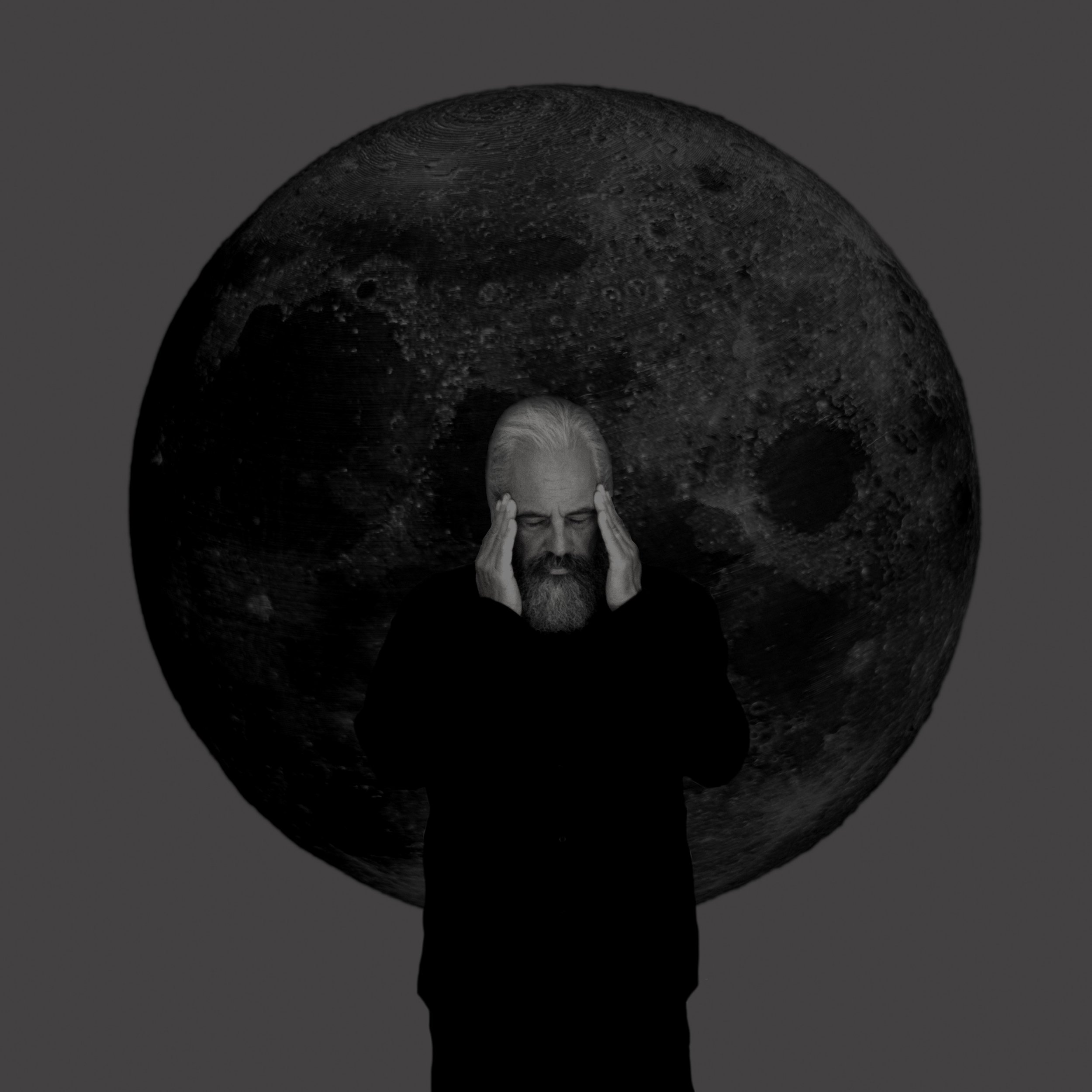
The Dark Side Of The Moon Photograph 55 x 55 cm / bw / Edition 1/3

The Mystery Of Black Holes Photograph 16 x 24 cm / bw / Edition 1/3

Black Hole And Stars Oil Paint and Acrylic on Canvas / 90 x 120 cm

Giant & Dwarf Acrylic on Canvas / 120 x 180 cm

Moon Fever Photograph 60 x 90 cm / b/w / Edition 1/3

Haevy Burden Photograph 60 x 90 cm / Edition 1/3

Blood Moon Photograph 60 x 90 cm / Edition 1/3

Between Polarities Photograph 90 x 60 cm / Edition 1/3

Equilibrium Photograph 60 x 80 cm / Edition 1/3

Planets 1 - 16 Inkjet Print and Oil Paint on antique Paper from France / about 20 x 30 cm

Planets 1 - 16 Inkjet Print and Oil Paint on antique Paper from France / about 20 x 30 cm

Planets 1 - 16 Inkjet Print and Oil Paint on antique Paper from France / about 20 x 30 cm

Meteorites Falling 1 - 10 Inkjet Print and Oil Paint on antique Paper from France / about 30 x 20 cm

Meteorites Falling 1 - 10 Inkjet Print and Oil Paint on antique Paper from France / about 30 x 20 cm

Exploration_1

Exploration_2

Exploration_3

Exploration_4

Exploration_5

Exploration_6

Exploration_7

Exploration_8

Exploration_9

Exploration_10

Exploration_11

Exploration_12
If you would like to buy the book, please click on the book. It directs you to the print shop. Thank you.
Energy Fields / Selection Part 1
Paintings on balinese cardboards with ashes and sand. (50x70 cm)









Energy Fields / Selection Part 2
Paintings on balinese cardboards with ashes and sand. (50x70 cm)








Schwarzarbeit Part 1 / Selection
Between the everything and the nothing is the diversity. And-, although we try to order and understand diversity in a continuous process, we will never decipher its causality. This work is created with black pigments and sand on recycled wood panels. Each strip in the strip is engraved by hand.
The Sound of the Hidden
The lines that Christian Lichtenberg places in the picture continue those lines that the artist began long ago. With these lines he is on the road, as one who follows nomadic principles, as one who follows his paths in a labyrinthine network and follows the traces.
Lichtenberg's travels are reflected in a photographic archive. However, it can take years before individual images are released from this fund, regain consciousness and enter into new contexts. Arranged in series, the photographs reveal a concentration on the essential not only because of their reduced coloration. With the choice of the point of view and the specific perspective on the slide-visible world, images crystallize out of a non-binding stream through the camera's viewfinder. Line structures become visible, such as the staccato of lines from a mown corn field, the dissonant line formations of reeds, the precise lines of a Japanese rock garden, or the chaotic tracks of a motorcycle in the sand, whose network of tracks runs through the entire picture space. The dynamics of these lines, whether organically grown or artificially created, aim at something energetic, which is not captured but activated by Christian Lichtenberg. Memories of invisible concatenations of energy and information flows, of networks of relationships and patterns of action come to mind. Lichtenberg creates transparency and clears the view for special cognitive abilities of visible phenomena, whereby he focuses less on interpretation than on the sound of the hidden.
At the same time, his photographic works pose questions of symmetry, rhythm and structure in variation to the painterly models, while the material boundaries of painting and photography are increasingly blurred in the digital processing and printing process.
Christian Lichtenberg's principle of mediation between media, on the other hand, is based less on materialism and composition and more on the search for a balance point that brings the impressions of the outer world into balance with the inner nature and a personal sign repertoire. If as a photographer he withdraws behind the phenomena, always present without being explicit, as a painter he literally inscribes himself in the black pigments in order to combine his reduced pictorial language with the visible materiality of the picture ground.Carved into the wood as a white trace on a black background, the individual lines join together to form regularly arranged compositions of strokes that push beyond the cut-out character of the picture field and integrate the work into an imaginary whole.
In Christian Lichtenberg's minimalist black-and-white pictures, his view of the world condenses into an iconic structure that continually tells of silence, clarity, and emptiness, but also of chaotic-productive fusions and the concentration of forces.
Katrin Steffen (Art critics)

Chaos, Order & Emptiness

As Well As # 3

Insideout

As Well As # 5+6

As Well As # 4

As Well As # 1

Stripes, No Stars

Black Field # 2

Black Field # 1

Black Field # 3

Black Field # 4

Two Stripes # 1

Two Stripes # 2

Two Stripes # 3

One in One

Two In One

Three In One

Four In One

The Squaring Of The Square
Schwarzarbeit Part 2

Motocross 1 - 9








Abstrich / X - Rays on Linen
I once lived in an abandoned women's hospital that I could use temporarily for three years. Everything that the doctors could no longer use, they left there. In the basement of the hospital I found an archive with X-Rays and in a library old doctors' books. I combined the linen covers of the doctor's books with the X-Rays to create abstract images. The aesthetically beautiful, contains the abyss of the destructive. A polarity that often runs invisibly through my work.



















